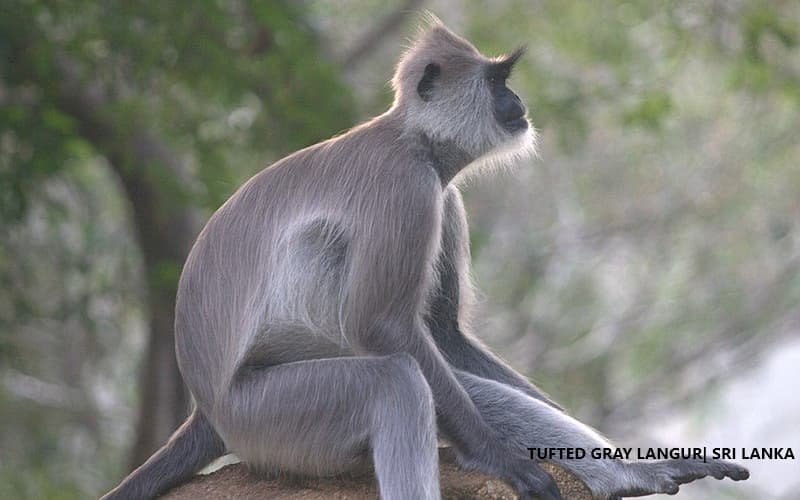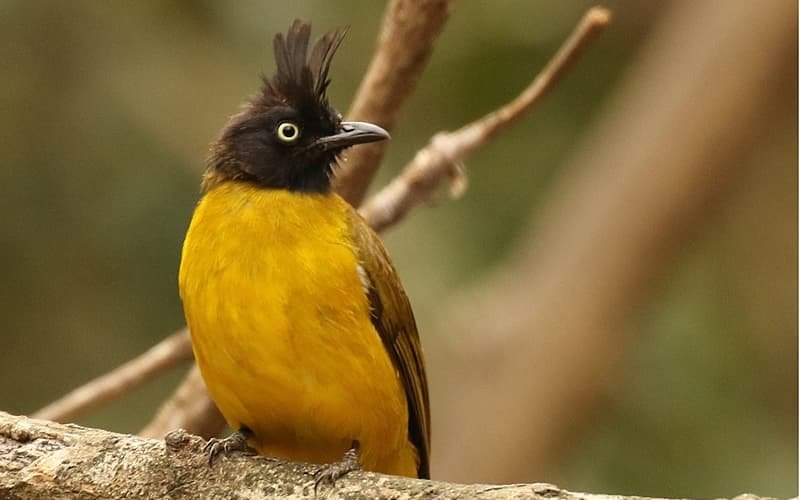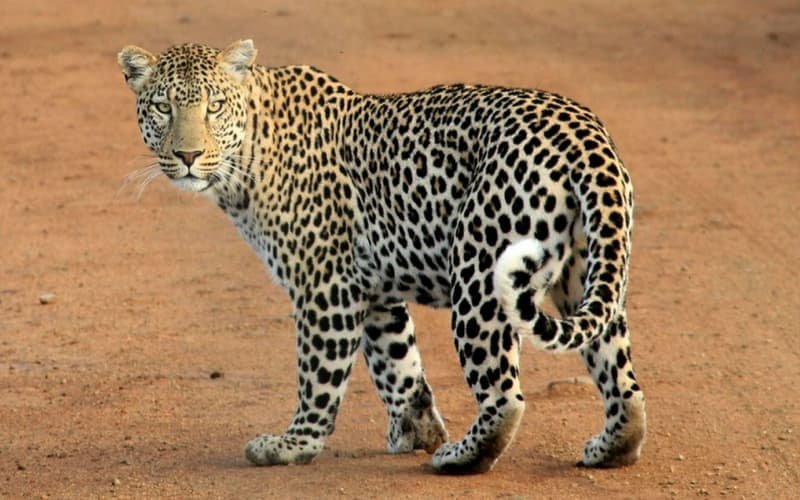Discover the Tufted Gray Langur in Sri Lanka, its habitat, diet, behaviors, and conservation status. Explore its unique features and ecological significance.
About Tufted Gray Langur
The Tufted Gray Langur, scientifically known as Semnopithecus priam thersites, is a fascinating primate species native to Sri Lanka. It is a subspecies of the larger Tufted Gray Langur population, with its counterpart (Semnopithecus priam priam) found in India. Known for its striking features and ecological role, this primate holds significant importance in Sri Lanka’s biodiversity.
Physical Characteristics of Tufted Gray Langur
- Size: Body length ranges from 55-80 cm, with tails extending 75-90 cm.
- Weight: Adult males weigh 11-20 kg, while females range from 6.8-13.4 kg.
- Appearance: The Sri Lankan subspecies is gray to brownish-gray, with pale underparts and a distinctive tuft of hair on its crown.
Despite being smaller than its Indian counterpart, the Tufted Gray Langur is Sri Lanka’s largest native primate.
Habitat of Tufted Gray Langur
The Tufted Gray Langur thrives in Sri Lanka’s dry zone forests, including areas near human settlements. Key habitats include:
Wildlife parks: Yala National Park and Hambantota.
Cultural sites: Polonnaruwa, Sigiriya, and Anuradhapura.
Behavior and Ecology of Tufted Gray Langur
Tufted Gray Langurs are diurnal, semi-terrestrial creatures, often seen foraging in gardens and large fruit trees like mango (Mangifera indica).
Mutualism: They often cohabit with spotted deer, warning each other of predators.
Social structure: Troops consist of 20-50 individuals, led by an alpha male or mixed male-female groups.
Communication: They use barks, grunts, and whistles to warn off predators and maintain group cohesion.
Diet of Tufted Gray Langur
Primarily folivorous, their diet includes leaves, fruits, seeds, and sometimes tree gum.
They also feed on lotus seeds near water bodies and consume tree bark during scarcity.
Common plants consumed: Drypetes sepiaria, Ficus microcarpa, and Hydnocarpus venenata.
Predators
The langur’s primary predators include:
Occasional predators: Dholes, crocodiles, and rock pythons.
Leopards and black eagles (top threats).
Conservation
The Tufted Gray Langur is classified as Near Threatened by the IUCN due to:
- Habitat destruction.
- Hunting for meat.
Conservation efforts in Sri Lanka aim to protect this species and its habitats.
Conclusion
The Tufted Gray Langur plays a vital role in Sri Lanka’s ecosystems, from seed dispersal to predator alert systems. Protecting this species ensures the health of Sri Lanka’s unique biodiversity.
Best Tours in Sri Lanka
Discover the best tours in Sri Lanka, where every journey unveils a new wonder. Explore ancient ruins, lush tea plantations, golden beaches, and vibrant wildlife. Experience the magic of this tropical paradise like never before!
Best Hotels
Experience luxury and comfort at the best hotels in Sri Lanka. From serene beachfront resorts to charming hill-country retreats, enjoy world-class hospitality, stunning views, and unforgettable stays tailored to your every need.🛌
Flight Booking
Looking to take off on your next adventure? Book your flights with ease and confidence! Whether it’s a dream vacation, a quick getaway, or a business trip, our flight booking service offers unbeatable deals, flexible options, and seamless convenience. Compare airlines, find the best routes, and secure your tickets in just a few clicks. With 24/7 customer support and exclusive discounts, the skies have never been friendlier. Start your journey today and make every mile memorable! ✈️




